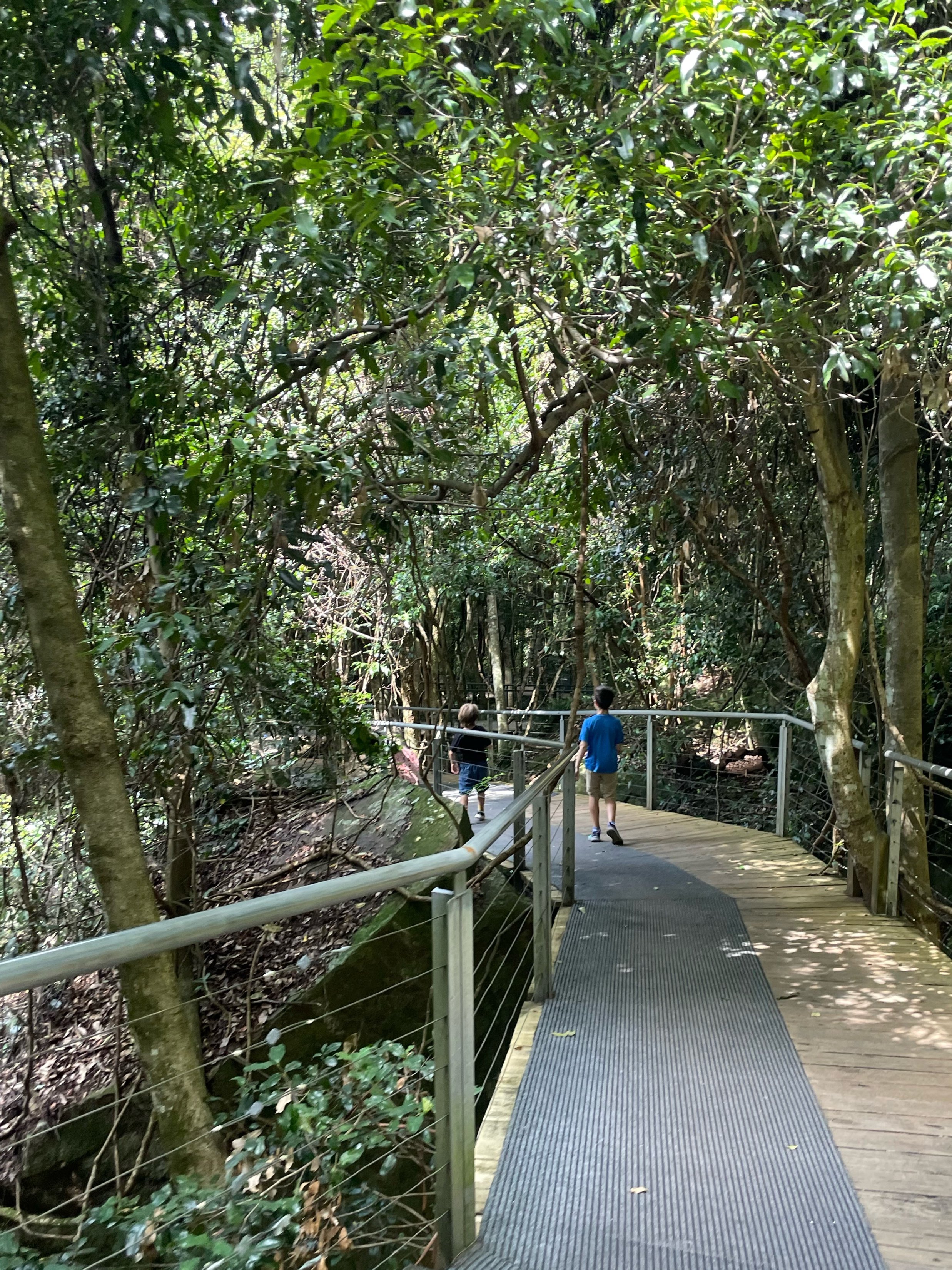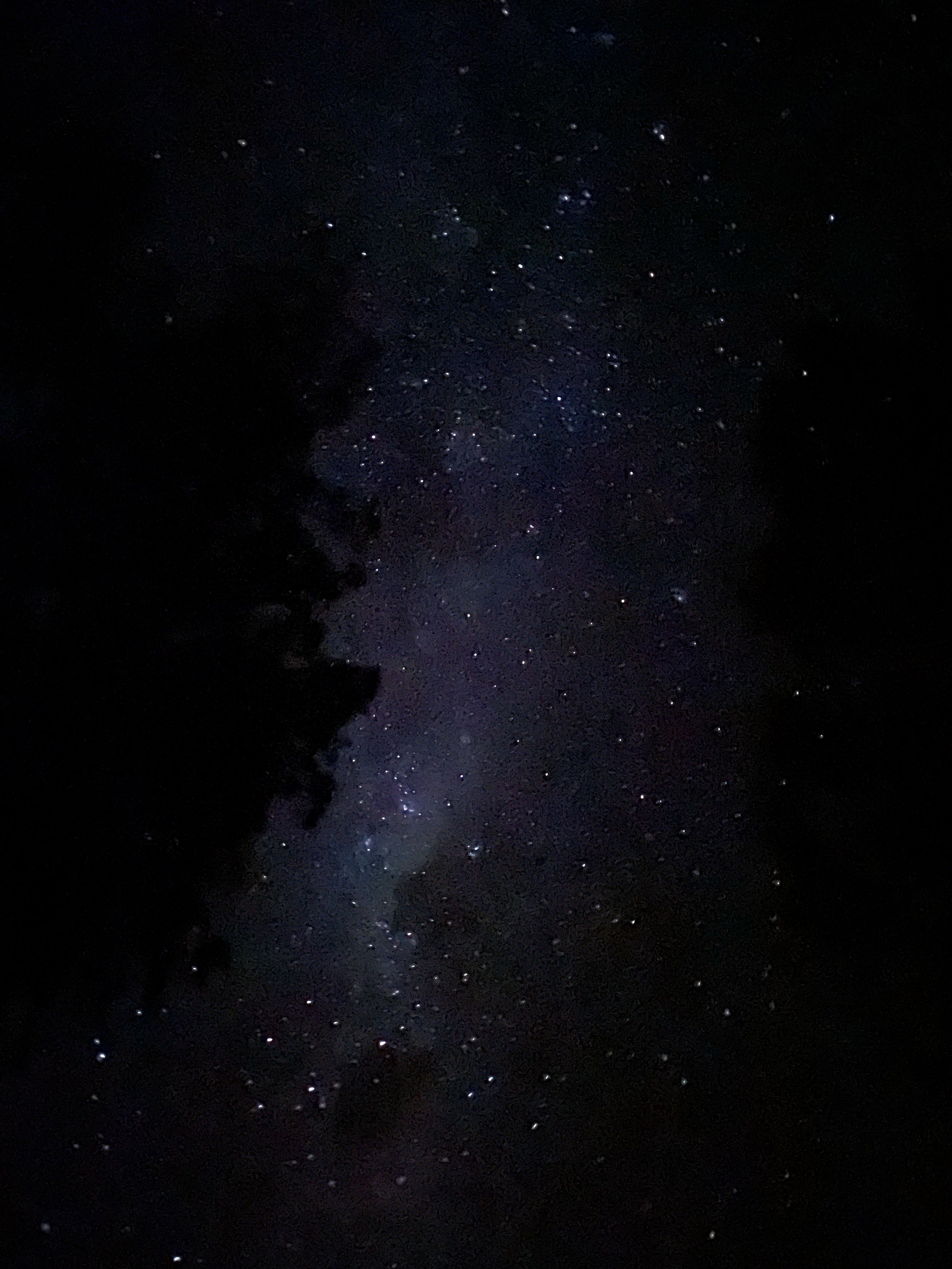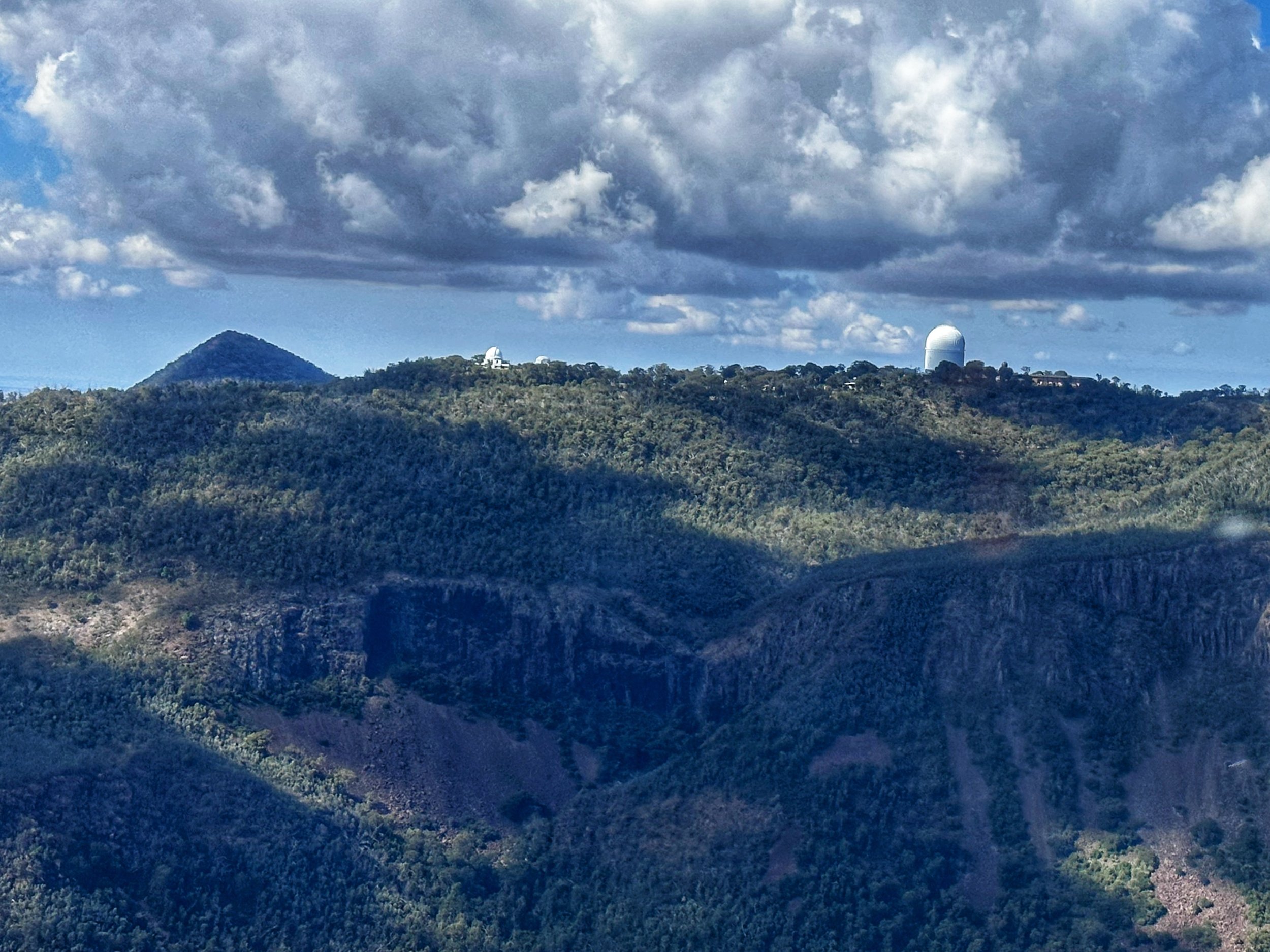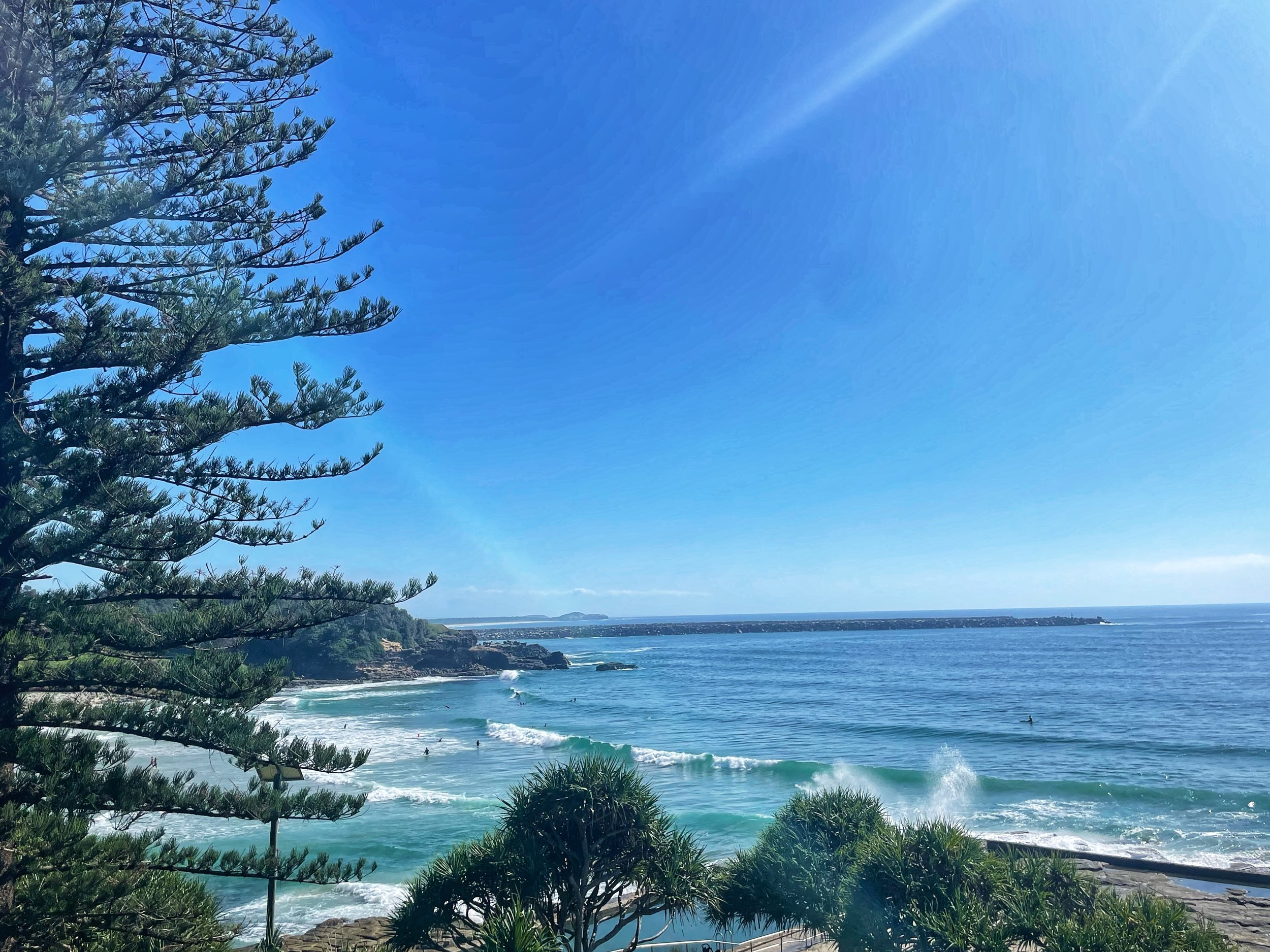New South Wales, Australia
Highlights
Blue Mountains National Park
Warrumbungle National Park and Pilliga
Waterfall Way
Yamba
Why visit New South Wales?
For far reaching views of vast landscapes and clean sandy beaches.
Getting there and around
After our stay in Sydney we hired a small car from Avis (World Square branch) for 2 weeks. The car hire cost £60 per day and that included unlimited mileage, additional driver, and car seats.
We took an inland route north and then east from Sydney, arriving back at the coast at Yamba, before heading north again up to Brisbane.
Our drive times (excluding stops) were:
Sydney to Katoomba - 2 hours
Katoomba to Mudgee - 2 hours
Mudgee to Pilliga - 3 hours
Pilliga to Armidale - 4 hours
Armidale to Yamba - 4 hours
We drove 1,460km (907 miles), and filled up the petrol tank 4 times at a cost of £120.
Accommodation
YHA Blue Mountains, Katoomba
We stayed for 2 nights at the YHA Blue Mountains hostel in a family room (with bunk beds and shared bathroom) at a cost of £80 per night.
The hostel was ok but basic and lacking in amenities compared to others we’ve stayed in. There was no air conditioning, fridge space, crockery and cutlery in the kitchen were in short supply, and cleanliness was an issue.
On the plus side, the price was low at just £20 per person per night, the wi-fi was decent and the outdoor space was lovely, with lots of birds. The hostel was well located in Katoomba, right on the main high street and a short walk from all the local attractions.
Our star rating: 3
Our cost rating: 4
Big 4, Mudgee
This caravan park is located on the outskirts of the town of Mudgee and had a mixture of caravan pitches and cabins.
Our 2 bedroom cabin, which we stayed in for 2 nights at a cost of £108 per night, was a bit cramped but was clean and had basic amenities. We had booked this park with the idea of spending the day relaxing by the pool. Unfortunately the pool was very cold, the laundry machines didn’t work well, and the wi-fi was slow. Even though the cost of this cabin was low, it didn’t feel good value for money given the issues we had.
Our star rating: 3
Our cost rating: 3
Barkala Farmstay, Pilliga
Barkala is a working farm owned by Maria who emigrated from Germany in the 1980s and has lovingly renovated the farm with her family.
We stayed in the Old Schoolhouse (£140 per night) which was built for Maria’s children to complete correspondence school and has now been converted into holiday accommodation.
The farm is home to the Pilliga Pottery with workshops on offer and ceramics for sale. Thanks to the Pottery, the cafe and accommodation were well stocked with beautiful plant pots, lampshades, candle holders and crockery. Even the basins in our accommodation were handmade on site.
As well as the pottery there was also a cafe, a gorgeous pool, and 60km of bush walking tracks. The farm is surrounded by the beautiful Pilliga forest.
Breakfast at the cafe was delicious, made with ingredients from the farm, and well priced (about £8-£10 per dish). The local honey was the best we’ve tasted. One evening we ordered takeaway pizzas for supper. They were excellent and again, used fresh ingredients from the farm.
The Old Schoolhouse was one of the quirkiest places we have stayed. It looked like a treehouse on stilts, reminiscent of Howl’s Moving Castle, or one of the kids’ creations in Minecraft.
The kids slept in bunk beds (two sets to choose from) off the main kitchen and living space, and upstairs under the circular wooden roof was a lovely double bedroom. There was air con in the main bedroom plus plenty of fans in the living area. Downstairs in the outside space under the building was an outdoor grill and seating.
Our star rating: 4
Our cost rating: 4
Tatersalls Hotel, Armidale
This hotel originally built in 1854 has been beautifully refurbished in the Art Deco style. The furnishings and decor were on point, we loved it. The hotel had a restaurant, sun room and lounge, and free car parking and wi-fi.
We had a 2 bedroom family apartment (with a luxurious bathroom, kitchen, dining table and sofa/TV area) which cost us £220 (including breakfast) and we stayed for 1 night. The hotel was good value for money given the quality of our room but it was over our budget.
Our star rating: 5
Our cost rating: 3
Ocean Stays Apartment in Yamba
We stayed in a rather swish 3 bedroom apartment in a brilliant location right on the seafront at Pippi Beach in Yamba.
It came with all the mod cons including laundry facilities, 2 bathrooms, balcony with BBQ, and a shared pool. The apartment was quite warm but the main bedroom did have air conditioning.
We booked this apartment through Airbnb but it’s actually managed by Yamba Ocean Stays and we’d recommend booking directly with them to save on fees. We stayed for 4 nights at a cost of £180 per night. Given how lovely the apartment was this felt good value for money.
Our star rating: 4
Our cost rating: 4
Blue Mountains National Park
Just 2 hours drive north from Sydney is the Blue Mountains National Park, a UNESCO World Heritage Site consisting of 268,000 hectares of escarpments, waterfalls and rivers, and forested valleys. That’s bigger than the areas of both London and Birmingham combined.
We spent 2 nights in Katoomba, giving us a full day to explore the Park. We decided to visit the Jamison lookout and also to pay to visit Scenic World (£80 for a family ticket) because it promised fun rides on quirky transport and a decent hike.
At Scenic World we started by descending into the valley on the world’s steepest railway! This was a nail biting ride which tipped us forward in our seats and had us holding on to the safety rail.
Once safely at the bottom we walked for 45 minutes along the boardwalks which took us through Jurassic rainforest. We saw a lyrebird and lots of crows. It was dark and refreshingly cool in the forest.
On arrival at Scenic World the person who sold us our tickets had advised us to download a free Gruffalo spotting app, and they gave the kids small Gruffalo activity books and stickers.
Along the boardwalks were signs to scan using the app, which brought up augmented reality animations of the characters from the Gruffalo story. This was fun and a nice way to make the hike more engaging for kids.
We walked along the boardwalks to the cableway which takes 84 passengers at a time in an enclosed cabin back to the top of the cliffs.
After a quick lunch, we rode the Skyway, which is the largest aerial cable car in the southern hemisphere. It crosses the Jamison Valley and is suspended 270 metres up in the air.
The Skyway gave us wonderful views of the rainforest canopy, Katoomba Falls, the three sisters rock formation and orphan rock. It even had a glass floor so we could see the valley far below us.
Everywhere we looked there were vast views of the blue mountains which were breathtakingly beautiful.
Katoomba was a sweet town with an interesting mix of small and independent shops. We ate delicious Vietnamese food at Pho Moi - it was so good we ate there twice!
Warrumbungle National Park and Pilliga
After our stay in Katoomba we drove to Mudgee where we stayed for 2 nights. Mudgee had a lovely mix of independent craft shops, boutiques, cafes and restaurants. Many people visit for the vineyards and wine.
After Mudgee we continued driving north to the Warrumbungle National Park and Pilliga.
The drive from Mudgee to the town of Coonabarabran took us about 2.5 hours. During that time the landscape changed from fertile grasslands to sandy scrubland, and traffic on the long straight roads thinned out to the occasional farm vehicle or pick-up truck.
We stopped in Coonabarabran for lunch at the Mint Leaf Cafe where there was an eclectic and delicious mix of food choices including sushi, dumplings, spring rolls, burgers and tacos. We picked up grocery supplies and, after a quick visit to the playground (located at the edge of the river with geese) we headed to our farmstay.
We stayed for 3 nights at Barkala Farm in Pilliga which was a further 30 minutes from Coonabarabran and only accessible via 10km of bumpy dirt track off the Newell Highway. The kids found the ride exhilarating and kept alternating from giggles of excitement at being in the bush, to screaming about seeing snakes and spiders (we saw none).
We spent our time on the farm reading, swimming, searching for insects, having barbecues, gazing at stars and enjoying the quiet and tranquility of the wonderful bush surrounding the farm.
This area is Australia’s first dark skies park. With the naked eye we could easily see the Milky Way spread out above us; the Orion constellation with its distinctive belt of 3 stars and the red Betelgeuse star; Mars; the Leo constellation with Regulas; and the brightest star in the night sky - Sirius.
Mal and William arranged for a helicopter ride with Bryce at Northwest Helicopters.
The ride cost £300 for a 30 minute flight over the Warrumbungle National Park, including Bluff Mountain, the Grand High Tops and the Breadknife. There were also great views of the Siding Spring Observatory perched on the hilltop.
We also visited the Pilliga Sandstone Caves. The starting point for the Yaminba Trail to the caves is located just off the Newell Highway, about 20km from Barkala Farm.
Aboriginal people have lived in this area for thousands of years. The sandstone caves are of significant cultural importance for the Gamilaraay People who ask visitors to be respectful and not touch the rock art and engravings which are over 12,000 years old.
The 1.7km walk to the caves took us 45 minutes and passed through scenic forest to impressive sandstone hills. This was a special place which we felt incredibly privileged to be able to visit.
Waterfall Way
From Pilliga we drove to Armidale where the hotel was great but the town wasn’t anything to write home about. It was really just a stop off for us on the way to the next place.
After one night in Armidale we drove north east towards the coast via the B78 road which is known as Waterfall Way. We stopped at Wollomombi Falls and Dangar Falls and admired the views.
As we approached the coast the road became hillier, greener and more lush with vegetation. The humidity increased too. It really felt as though we’d left the sandy dry scrubland behind.
Yamba
Our apartment in Yamba was located right on the seafront and we enjoyed lots of walks along the beautiful Pippi Beach. The beaches were busy with surfers during the day but almost completely empty come late afternoon.
The sand was soft and golden and went on as far as we could see. The beach was wide and the sea was shallow, warm and clear - so safe and lovely to swim in. This beach was one of the best we’ve been too and it was perfect for building sandcastles, collecting shells, playing catch, and jumping waves.
At the far end of the beach were smooth rocks perfect for scrambling on and looking in rock pools.
We visited Yamba from Friday to Monday on the third weekend of the month. Unfortunately this meant we missed both the weekly farmers market (Wednesdays) and the river craft market (last Sunday of the month).
But even so we really enjoyed this little seaside town with its small independent boutiques, shops and cafes.
Final thoughts
We were keen that our visit to Australia didn’t just include coastal towns and well developed cities, but that we got to see some of rural life and the outback too. By taking taking an inland route from Sydney to Brisbane it meant we veered off the coastal backpacker trail.
This part of our trip took us 2 weeks and we drove 1460 km. Yet we travelled through only a tiny part of this massive country. We absolutely can’t claim to have seen everything or to have ‘done it all’ (and nor would we want to, as checkbox tourism isn’t really our style).
But we did feel that we got a small insight into rural life in Australia and some of the challenges faced by people who live in the interior, including the huge distances, remoteness, and the increasingly extreme weather. We also got to see the rewards of living here too - spotting unique wildlife (not so much the roadkill!), the expansive starry skies, and the diverse landscapes.
We weren’t as active during this portion of our trip and didn’t complete all the hikes we’d planned. Instead we fell into an easy slower rhythm and more relaxed pace of life.
Wild Rumpus Travel copyright © 2021 - 2024 all rights reserved.




















































